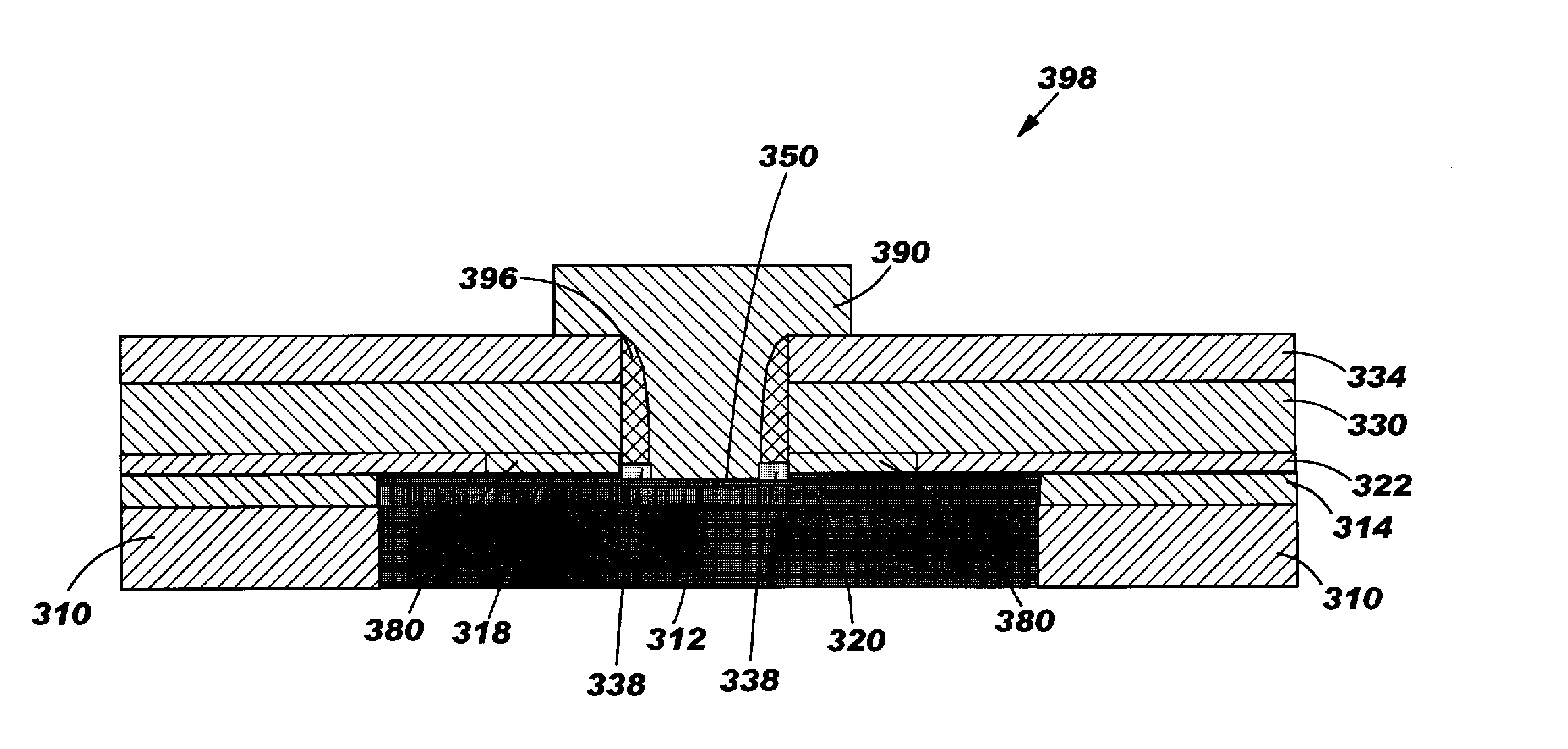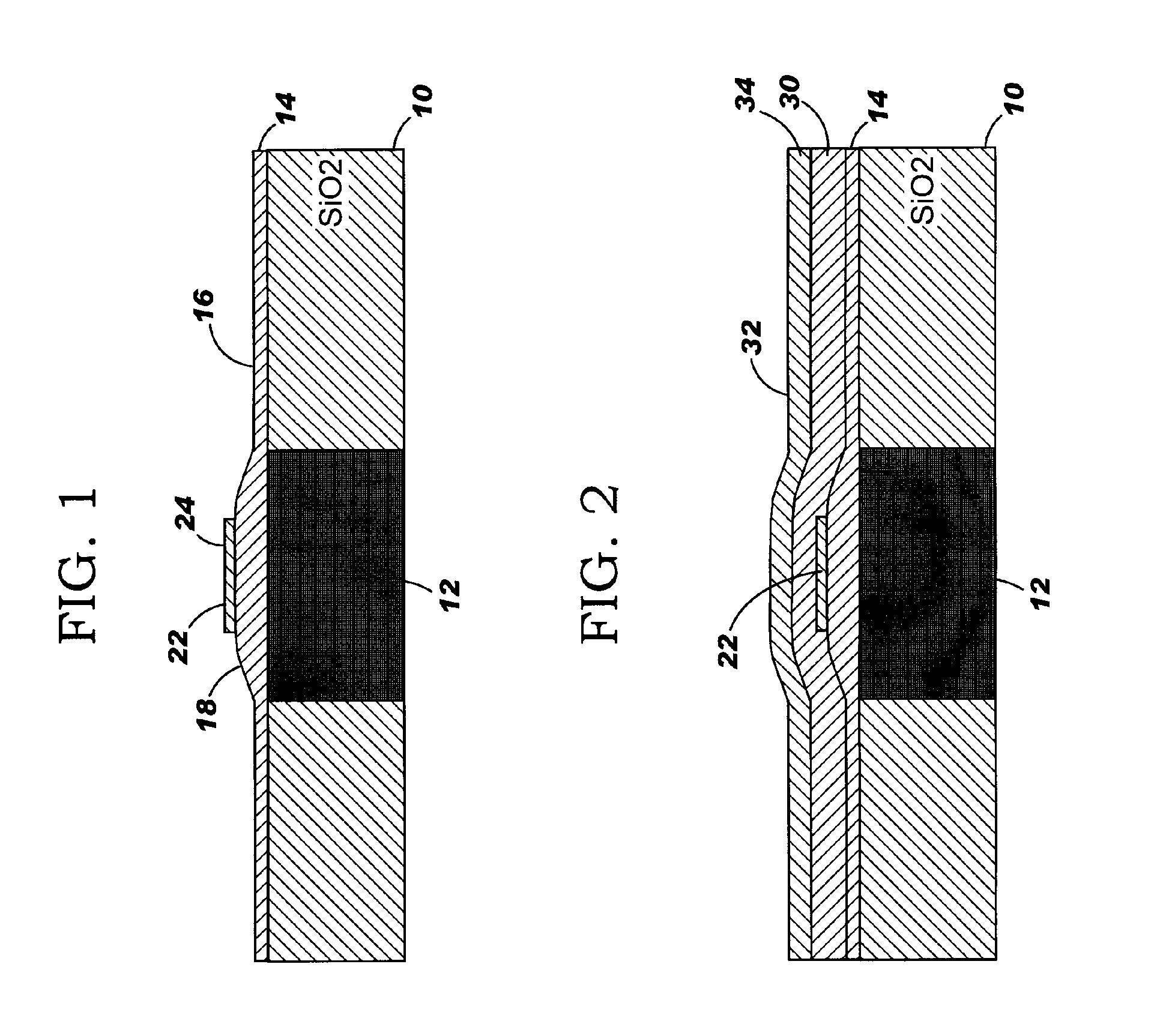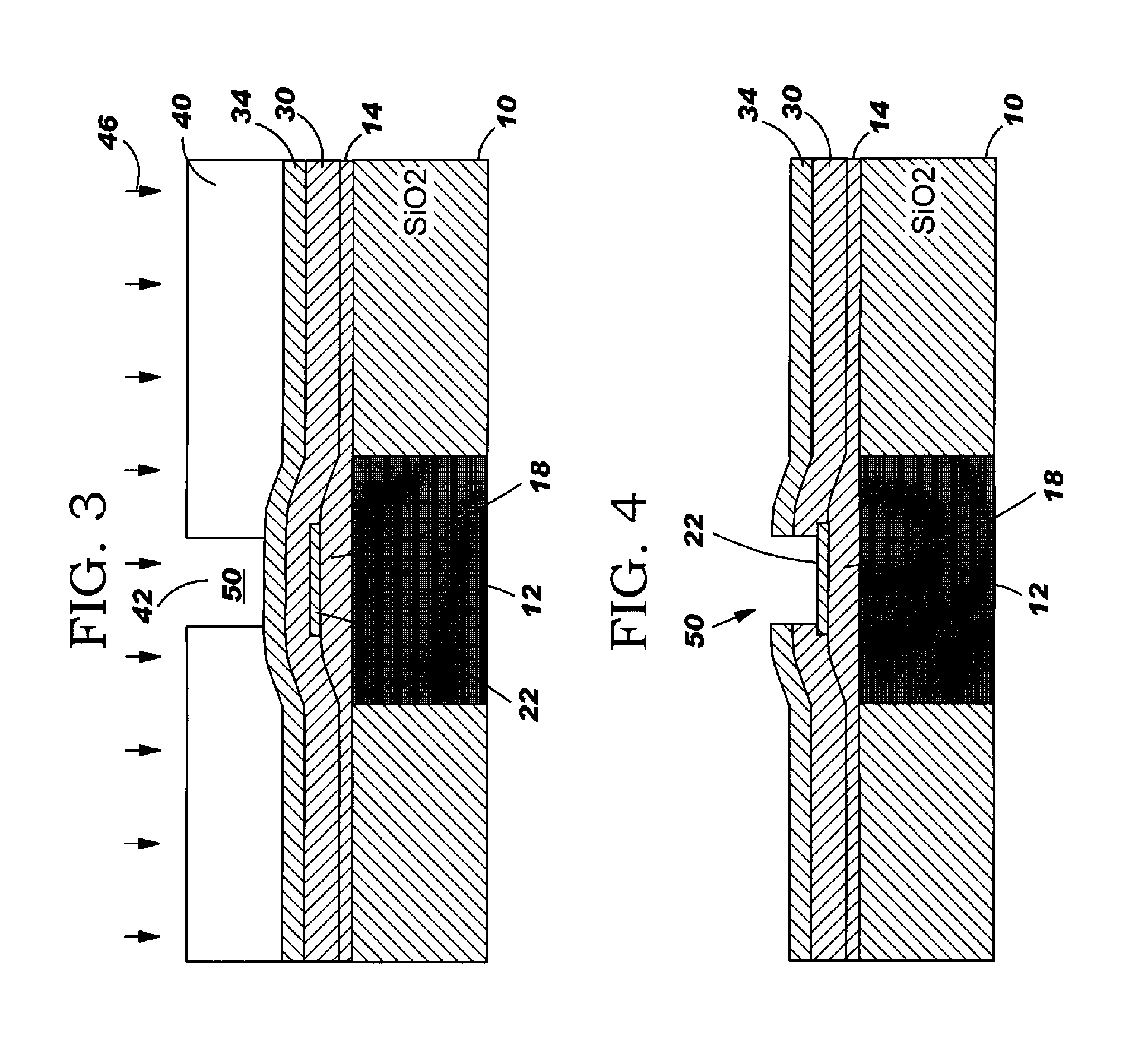Bipolar transistor structure with self-aligned raised extrinsic base and methods
a raised extrinsic base, bipolar transistor technology, applied in the direction of basic electric elements, electrical apparatus, semiconductor devices, etc., can solve the problems of poor rb control, increased process complexity, increased rb but, etc., to eliminate complexity and cost
- Summary
- Abstract
- Description
- Claims
- Application Information
AI Technical Summary
Benefits of technology
Problems solved by technology
Method used
Image
Examples
first embodiment
1. First Embodiment
[0051]With reference to the accompanying drawings, FIGS. 1–10 illustrate a first embodiment of the invention. FIG. 1 shows a starting point for the processing of the invention according to the first embodiment. In FIG. 1, a shallow-trench isolation (STI) 10 is provided of silicon dioxide (SiO2) (hereinafter “oxide”) having an active silicon (Si) region 12 in a portion thereof. A low temperature epitaxial (LTE) growth of silicon over this structure results in an intrinsic base layer 14 including a polysilicon portion 16 formed over STI 10 and a silicon intrinsic base portion 18 formed over active silicon region 12. Intrinsic base portion 18, as will become apparent below, provides an intrinsic base of a resulting self-aligned bipolar transistor structure 200 (FIG. 10).
[0052]A first insulator layer (not shown in its entirety) is then formed over intrinsic base layer 14, patterned and etched to form a landing pad 22, i.e., an etch stop layer, on a portion 24 of intri...
second embodiment
2. Second Embodiment
[0061]Referring to FIGS. 11–18, a second embodiment of the invention will now be described. FIG. 11 illustrates a starting point for the processing of the invention according to the second embodiment. In FIG. 11, a structure 300 is provided including a polycrystalline intrinsic base layer 314, an intrinsic base 320 and an emitter cap 318 adjacent polycrystalline intrinsic base layer 314, a first insulator layer 322 on emitter cap 318, a raised extrinsic base layer 330 over first insulator layer 322, and a second insulator layer 334 over raised extrinsic base layer 330. Emitter cap 318 and intrinsic base 320 are provided over an active silicon region 312. Emitter cap 318 may be formed by a low temperature epitaxial silicon growth over a silicon-germanium containing layer of intrinsic base 320, which is over active silicon region 312. Polycrystalline intrinsic base layer 314 is adjacent to emitter cap 318 and intrinsic base 320. Polycrystalline intrinsic base layer...
third embodiment
3. Third Embodiment
[0068]Referring to FIGS. 19–26, a third embodiment of the invention will now be described. FIG. 19 illustrates a starting point for the processing of the invention according to the second embodiment. In FIG. 19, a structure 400 is provided including a polycrystalline intrinsic base layer 414 including an intrinsic base 420, an emitter cap 418, and a thin silicon-germanium (SiGe) etch-stop layer 417 over emitter cap 418. Provision of emitter cap 418, SiGe etch-stop layer 417 and intrinsic base 420, which may include SiGe, may be formed by a conventional low temperature selective or non-selective epitaxial growth. Polycrystalline intrinsic base layer 414 is adjacent to intrinsic base 420, emitter cap 418 and etch-stop layer 417, and is deposited over STI 410 of, for example, silicon dioxide. Over polysilicon intrinsic base layer 414 and SiGe etch-stop layer 417 is provided a first insulator layer 422, a raised extrinsic base layer 430 over first insulator layer 422,...
PUM
 Login to View More
Login to View More Abstract
Description
Claims
Application Information
 Login to View More
Login to View More - R&D
- Intellectual Property
- Life Sciences
- Materials
- Tech Scout
- Unparalleled Data Quality
- Higher Quality Content
- 60% Fewer Hallucinations
Browse by: Latest US Patents, China's latest patents, Technical Efficacy Thesaurus, Application Domain, Technology Topic, Popular Technical Reports.
© 2025 PatSnap. All rights reserved.Legal|Privacy policy|Modern Slavery Act Transparency Statement|Sitemap|About US| Contact US: help@patsnap.com



